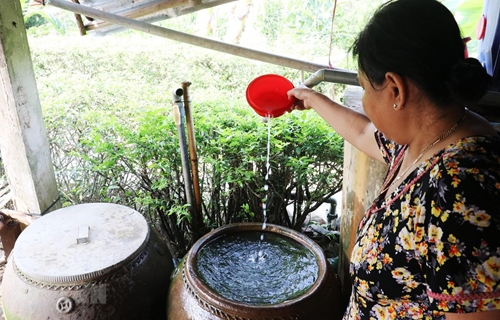In an interview granted to the Vietnam News Agency on the occasion of World Water Day on March 22, with the theme “Valuing Water”, Linh said Vietnam has abundant sources of water, with a total volume of around 9,434 cu m per capita each year - higher than regional and global standards.
    |
 |
|
People are called for practical action to sustainably protect and tap into water resources. (Photo for illustration) |
However, due to reliance upon external sources, the domestic annual volume is only 4,200 cu m per capita, lower than the average of 4,900 cu m per capita per year in Southeast Asia, she added.
As Vietnam is one of the countries hit hardest by climate change, water resources will be severely and quickly affected by uncertain rainfall and rising sea levels.
In recent years, countries in upstream areas have been stepping up the exploitation of water on trans-national rivers, especially in the basins of the Mekong and Red Rivers.
The construction of dykes and hydropower plants on the upper reaches of the two rivers is a direct threat to water flows in Vietnam and to the country’s water security.
According to the World Bank, demand for water during the dry season in Vietnam will increase 32 percent by 2030. Eleven out of 16 major basins in the country will face tension relating to a lack of water, especially the four basins of the Red, Thai Binh, Mekong, and Dong Nai Rivers and basins in the southeastern region.
Data shows that for each cu.m of water, Vietnam generates only 2.37 USD in GDP, or about one-tenth of the world average of 19.42 USD.
Vietnam has so far built a comprehensive set of laws meeting the need for water management in the immediate future, including reviewing and amending the Law on Water Resources, encouraging economic sectors to develop water resources and services, and raising public awareness on the effort.
The country has also approved national planning of water resources, including those in the basins of the Red and Mekong Rivers and other major basins.
Linh called for enhancing international cooperation in water resources, especially in improving the efficiency of cooperation with other countries in the sustainable use and exploitation of trans-national water resources.
Source: VNA